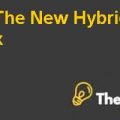Medimedia International Limited Case Solution
Mezzanine Debt
The Medimedia international, ltd. has decided to finance the leverage buyout through Mezzanine debt. Some of the key features of the Mezzanine debt are as following:
- As it is a high-return form of debt; it carries its own risks. Generally, an interest rate between 12%-20% is considered to be ideal for the Mezzanine debt. In this case, the interest rate for mezzanine debt is LIBOR plus 3.5%.
- The added benefit that mezzanine debt carries with itself is that it can provide four-five times of the capital to the company, even if it’s a mid-sized company.
- Due to the risky nature of this type of financing; the mezzanine creditor would go with the internal rate of return (IRR) of 20%-30% rather than opting an IRR of over 40%. The lower IRR suggests that the transaction is risky.
- The other option that it provides is cushion to the senior loan with a larger capital base, because mezzanine debt reduces the burden of investing managements’ own capital into the LBO. Therefore, raising the senior debt becomes easier; meanwhile, raising equity capital gets much simpler improvement in the return on investment by mezzanine.
- Furthermore, to facilitate the investors, one of the layers of mezzanine debt is warrants, which can help the mezzanine creditors in having chance to play on Medimedia’s equity.
- With a well-structured and flexible structure; mezzanine debt can provide better amortization and other coupons cash flow requirement of the business.
Value key options
The financing of the firm was embedded with value key options:
- When mezzanine loan and senior debt will be satisfied; the mandatory prepayments would depend on the sale of share capital when the share capital is listed in case of nay merger of Medimedia and when all the assets are disposed of.
- The note holders could be the part of the profit taking process as they could gain 25% if sold in initial year, 20% if it sold in 2nd year and so on until 10% and until the maturity of the loan.
- The mezzanine debt fills the gap between equity, which could be provided by the managers and the senior debt. This financing technique would allow senior debt to get advanced against the security of the company’s cash and its assets.
- The business generated a strong cash flow which according to the company’s management could be useful in servicing the debt.
- Division of senior term loan facility was divided into two separate tranches A and B. All the transactions in tranche A is denominated in ECUs, while that of Tranche B is denominated in the US dollar. Paying back in dollars would be quite beneficial for the firm, with the weakness of US dollar against the European currencies. The interest payments and principle payments would be very costly.
- According to the estimates; it wouldn’t take more than six years for the senior term loan to be completely repaid.
Recommendations
The Medimedia international has planned a leverage buyout in an effort to turn the company into a private organization. The company has come up with an out of the box idea to finance its project through managers equity and European currency units denominated debt has been one of the factors that kept the analysts interested in the deal. The capital investor comprises of senior creditors and management team to provide with the equity and mezzanine debt to support the equity and debt financing.
The company is recommended to use mezzanine debt in order to fulfil its need of complete financing for its leverage buyout plan. First of all, this form of transaction would allow senior debt to be employed for safety of other assets. Moreover, it would save the managers’ capital to be invested in the firm or they can also utilize their capital in other operations of the firm. As it provides safety to senior loan; it provides the company with a large capital base alongside an improved asset coverage.........................
Medimedia International Limited Case Solution
This is just a sample partial case solution. Please place the order on the website to order your own originally done case solution.













